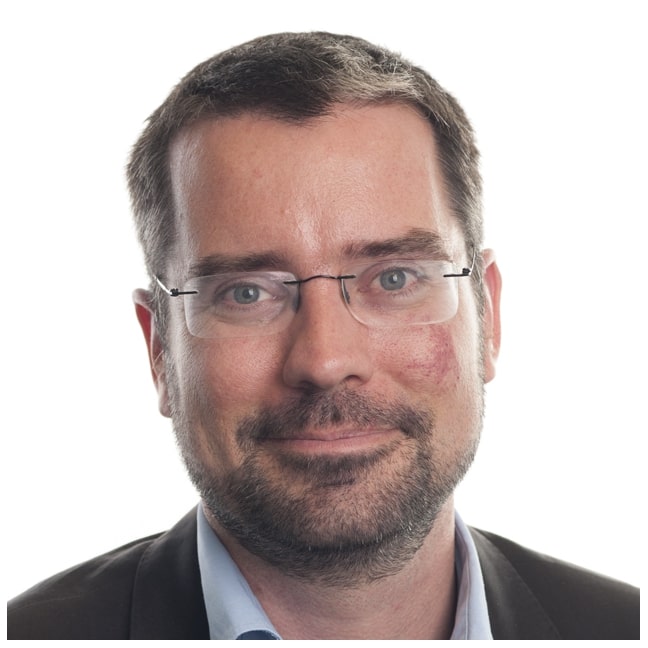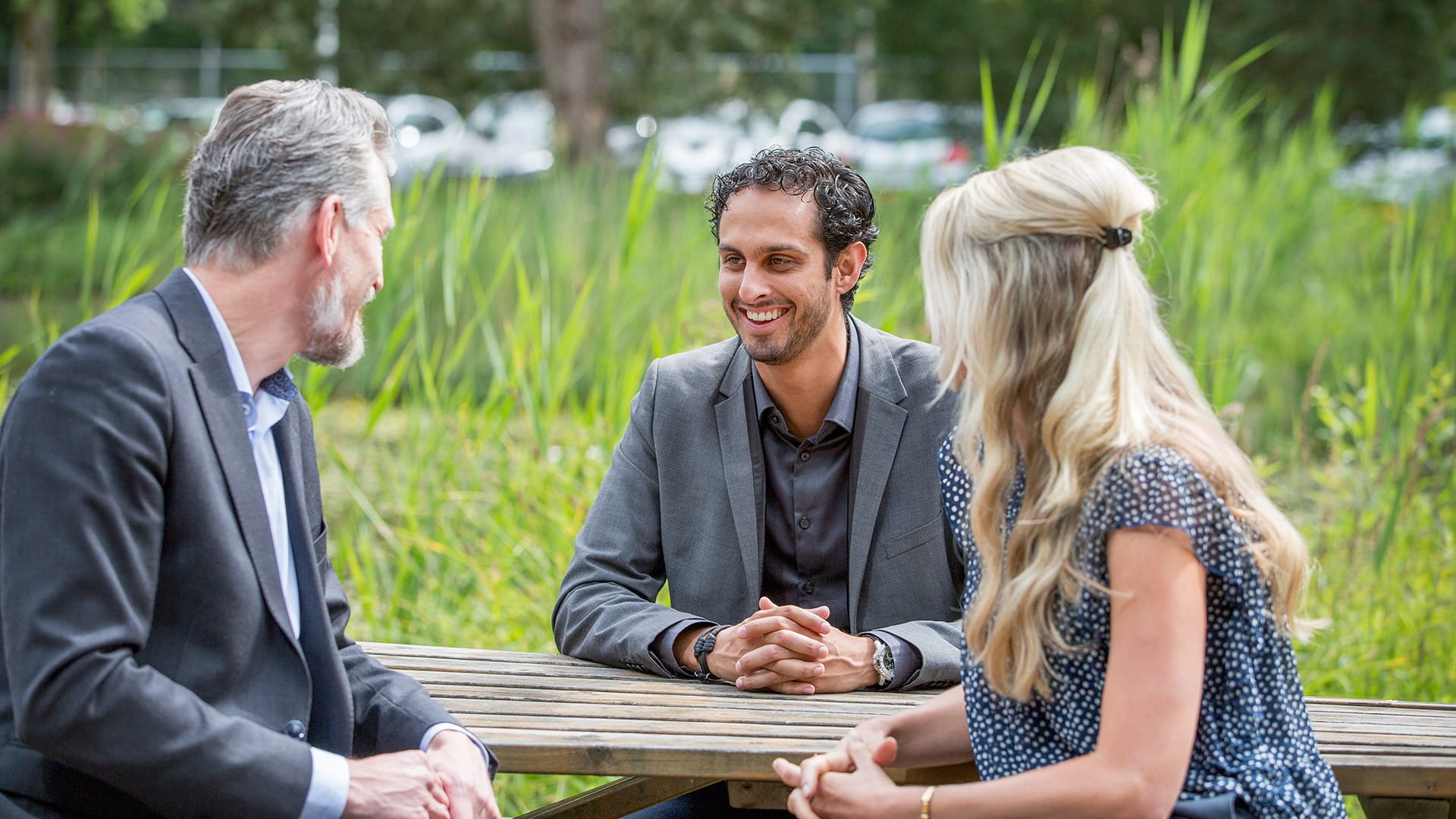You can’t stop nature in its tracks: climate resilience in Japan
The airport was recovering from the aftermath of Typhoon Jebi - the strongest storm to hit Japan in 25 years - and had sought out expertise on how to better protect itself against extreme climate events in the future.
In his role as Airport Planner and Project Manager for NACO, the aviation planning and design company of engineering consultancy Royal HaskoningDHV; Joeri and the colleagues who joined him on the visit had helped many airports do just this - combining NACO’s in-depth airport experience with Royal HaskoningDHV’s heritage in water, flood and climate management expertise.
As Joeri settled in for the long flight, he reflected on the ties between his home and this new destination.
The Dutch and Japanese have both a shared history – having been exclusive trading partners for nearly two hundred years, through the trading-post of Deshima in Nagasaki harbour in the 18th and 19th century – and a shared threat, with both countries facing equally challenging environmental conditions. The Netherlands sits below sea-water level, with flooding a constant risk, while Japan sits atop the ‘Ring of Fire’ in a typhoon-prone region.
As he poured over his notes before the descent, the path ahead seemed clear: We’ll arrive in Kansai and build on this shared history of collaboration, to add value with our Dutch expertise and support our Japanese counterparts in preventing future flooding. Simple, no?
A tanker thrown like a toy
While Japan is not unfamiliar with extreme weather events, the soundbite of - the strongest storm to hit Japan in 25 years - doesn’t do justice to the havoc and devastation that Typhoon Jebi caused in the Kansai region alone, when it struck on September 4th 2018.At Kansai Airport – built on a man-made island as a travel and economic gateway to Osaka, Kobe and Kyoto - a record-breaking wind gust was recorded at 130mph. In dramatic footage broadcast by news stations, churning waves unmoored a 2,500-tonne tanker and hauled it into the side of the bridge linking the airport to the mainland.
The waves came at the airport like a wrecking ball, breaking holes the size of cars in the concrete sea defences. Eventually, the water overwhelmed them and came rushing in, flooding first the runway and then the terminal basement, where it reached switch rooms and killed the power - including the emergency speaker system. Over 3,000 people were stranded at the airport and required evacuation.

Taking stock in the aftermath
While those stuck at the airport were safely evacuated, Kansai Airport was not fully operational for two weeks - and the bridge, a vital connection to the mainland, wasn’t fully available to passengers for a month. The Asia Pacific Institute of Research estimated the economic impact on the Kansai region alone totalled some 60 billion Japanese Yen – or 500 million dollars.Behind the wall of figures and costs was the real impact to people like Haruto - a business owner who exports and imports toys via Kansai Airport. The flooding of cargo areas at the airport left him cut-off at one of the busiest periods in his calendar - with Christmas, Thanksgiving, and the Japanese gift-giving holiday, Oseibo, all fast approaching.
The operators of Kansai Airport – an equal partnership between Japanese and French companies - knew powerful typhoons in the Osaka Bay were a possibility; but they had not imagined one of this ferocity. The damage unleashed was a stark reminder of the erratic and unpredictable nature of climate change and the need for greater protection.
You can’t stop nature in its tracks
When Joeri touched down with his colleagues in Kansai almost four months later, the visit began with a tour of the airport. As they entered the terminal basements, Joeri noticed a watermark that came up almost to the waist of his khaki jacket, now dried from the warm Japanese sun, and for a moment he pondered what it must’ve been like in those terrifying hours as Typhoon Jebi roared over the island.Their visit centred around a meeting between Joeri, his colleagues and their Japanese and French counterparts, including Sebastien Lacoin and Tsuyoshi Emura (later replaced by Hitoshi Seguchi). Going in, Joeri felt assured:
“We’re experts in water and flood management,” Joeri says, reflecting on the project: “and combined with NACO’s in-depth understanding of airports, we felt we knew what to expect. In the Netherlands, we design climate defences, whether built-in from scratch or upgrades and additions, for 1 in 10,000 or 1 in 1,000-year events - and here we would do the same.”

Joeri realized that, just as the Dutch traders had had to accept ‘how things work in Japan’ in the 18th century, when their traders were not allowed to move beyond the island of Deshima; so too now there was a need to adapt his approach to local conditions. He knew his team had to think differently.
“While a full prevention approach wouldn’t be feasible, we discussed with Sebastien and Tsuyoshi that there was still work that could be done to mitigate the impacts. We know that you can’t stop nature in its tracks, but over the years, we’ve learnt to build with nature so that you can at least slow it down, direct it to less critical areas and make sure the disruption that follows never reaches the levels seen after Typhoon Jebi.

By taking a long-term perspective towards disaster resilience for airports, we can work towards mitigation, adaptation, and resilience by design, in collaboration with our Japanese colleagues.
Play to your strengths - and work together
By the end of their visit, the project that Joeri and his team were a part of had changed. They had experienced first-hand the precarious position of Japan, and the will of their Japanese colleagues to collaborate with subject-matter experts, to find the perfect balance of global solutions and local context.
Both parties held great respect for the other's approach to disaster prevention - and saw that both had merit. They decided each of them would play to their strengths, to forge a collaboration that sets a marker for climate resilience across borders: “Part of collaboration is knowing when to step back,” Joeri continues: “and we weren’t interested in doing everything. We were interested in providing value to the client and their local consultants; and to, together, build resilience for the airport and ultimately the entire Kansai and Osaka region that relies on it every day.”
Innovative mitigation - where technology meets insight
Joeri and his team got to work applying their Dutch expertise in this new perspective. The NACO & Royal HaskoningDHV team firstly analysed the relevant climate and environmental factors the airport was exposed to, before carrying out an analysis of how critical different assets - runways, air control towers, cargo areas - were to the airport’s operations. Once this was completed, the team began to review what the impact of flooding would have on them and what adaptations could be made.
If it all sounds a little technical, it’s because it is. In translating their insights to Kansai Airport and its stakeholders, the team understood the potential communicative barrier of sharing their analysis and made use of a unique digital innovation: The Circle Tool. The dynamic visual tool shows the different airport assets as segments that make up a circle - and shows how inter-related they are:
“Through The Circle Tool, we could show that if you had flooding in a substation, causing it to fail - and that substation feeds power to a pumping station that’s supposed to pump away seawater that overtops the sea-defences; the cascading effect is quickly identifiable. Flooding at that one point could end up with water reaching a terminal basement, a switch room and then cutting power to the terminal - exactly as it did with Typhoon Jebi. If we could see this, then we could explain the prioritisation of works to stop it.”
From two weeks, to two days
Throughout their work, Joeri and his team collaborated with Kansai Airport to better understand constraints, share new insights and ultimately, deliver results - always led by the humility that had brought them to this point: “We built simulations of the flooding caused by Typhoon Jebi, working with our counterparts at the airport who provided information on flood depths at the time for the calibration of our model - and once we had that, we could start exploring with different adaptations and mitigation measures.”
One of the measures saw the team make use of a canal that sat between the southern and northern islands of the airport: “We saw that if you could close off the canal at both ends, you could use it as a catchment area for flood water. If you could guide the water to the area during a flood event, then the canal could retain the water until the storm has passed, water levels had decreased, and the retained water could be slowly released.”
“We simulated the impacts and effectiveness of different drainage channels to guide the water towards the canal, in order to propose a solution that would allow the airport to be restarted in one or two days.”
The future of airport resilience
Joeri says the words modestly now, but the impacts go beyond operational efficiency, especially for residents of Kansai like Haruto. The difference between one or two days of downtime, compared to the two weeks and more that resulted from Typhoon Jebi, is huge. For Haruto, he could’ve gotten his shipments out with only a minimal delay - avoiding losses and a lot of stress.Now, while they can’t go back and change the past, the insights, adaptations and solutions that NACO and Royal HaskoningDHV developed in collaboration with Kansai Airport - Dutch expertise combined with a Japanese perspective - will ensure that the disruption seen in those harrowing few hours on 4 September 2018, is not repeated.
On the flight back from their first visit to Kansai, that week in January, Joeri mulled over a question that seemed to represent how their project had changed; and perhaps how they all should change in face of climate change, with all its uncertainties:
If global climates are as diverse as nations, people and languages - then shouldn’t our response to them not also be rooted in a local, collaborative approach that respects this diversity?

Are you ready to work on projects that drive positive change?
We are always looking for talents who want to collaborate closely with colleagues, clients and stakeholders and offer a new perspective to illustrate the bigger societal and technological picture. Talents who uses their deep domain knowledge to shape innovative solutions to make the transition to smart and sustainable possible. All the while considering the ethical implications of these solutions, to ensure we are driving positive change at every level: globally and locally, for our today and our tomorrow.
